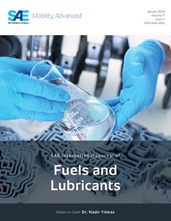Additive Formulation Technology for Fuel Economy Passenger Car Motor Oil and Development of Sequence VID Screener
- Content
- Fuel economy is one of the most essential performance requirements for Passenger Car Motor Oil because of fuel economy regulations in many countries and increasing fuel prices. The ILSAC GF-5 specification was issued on December 22, 2009 and requires better fuel economy performance based on the Sequence VID (Seq. VID) Test and higher weighted piston deposit merits based on the Sequence IIIG Test, compared to the ILSAC GF-4 specification. Fuel economy performance is affected by viscosity, friction modification and the lubricant additive chemistries. However, fuel economy engine tests under combustion mode introduce high variability into a fuel economy measurement. Screening by bench testing is complicated by the difficulty to reproduce friction conditions of all of engine parts. A motored friction torque test using an engine is one of the better solutions for fuel economy screening. As such, various additive chemistries were evaluated on this test using the latest model engine, and it distinguished the differences in additive chemistries, in addition to those in viscosity and friction modifiers. A correlation between the motored friction torque test and the Seq. VID for Fuel Economy Improvement (FEI 1) was also studied. The impact of phosphorus contained in Zinc Dithiophosphate was also evaluated for fuel economy in the Sequence VIB (Seq. VIB). Lower phosphorus formulations showed better fuel economy improvement.
- Pages
- 6
- Citation
- Ushioda, N., and Ogasawara, Y., "Additive Formulation Technology for Fuel Economy Passenger Car Motor Oil and Development of Sequence VID Screener," SAE Int. J. Fuels Lubr. 5(1):410-415, 2012, https://doi.org/10.4271/2011-01-2111.
